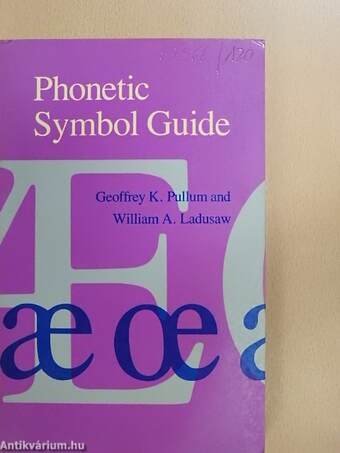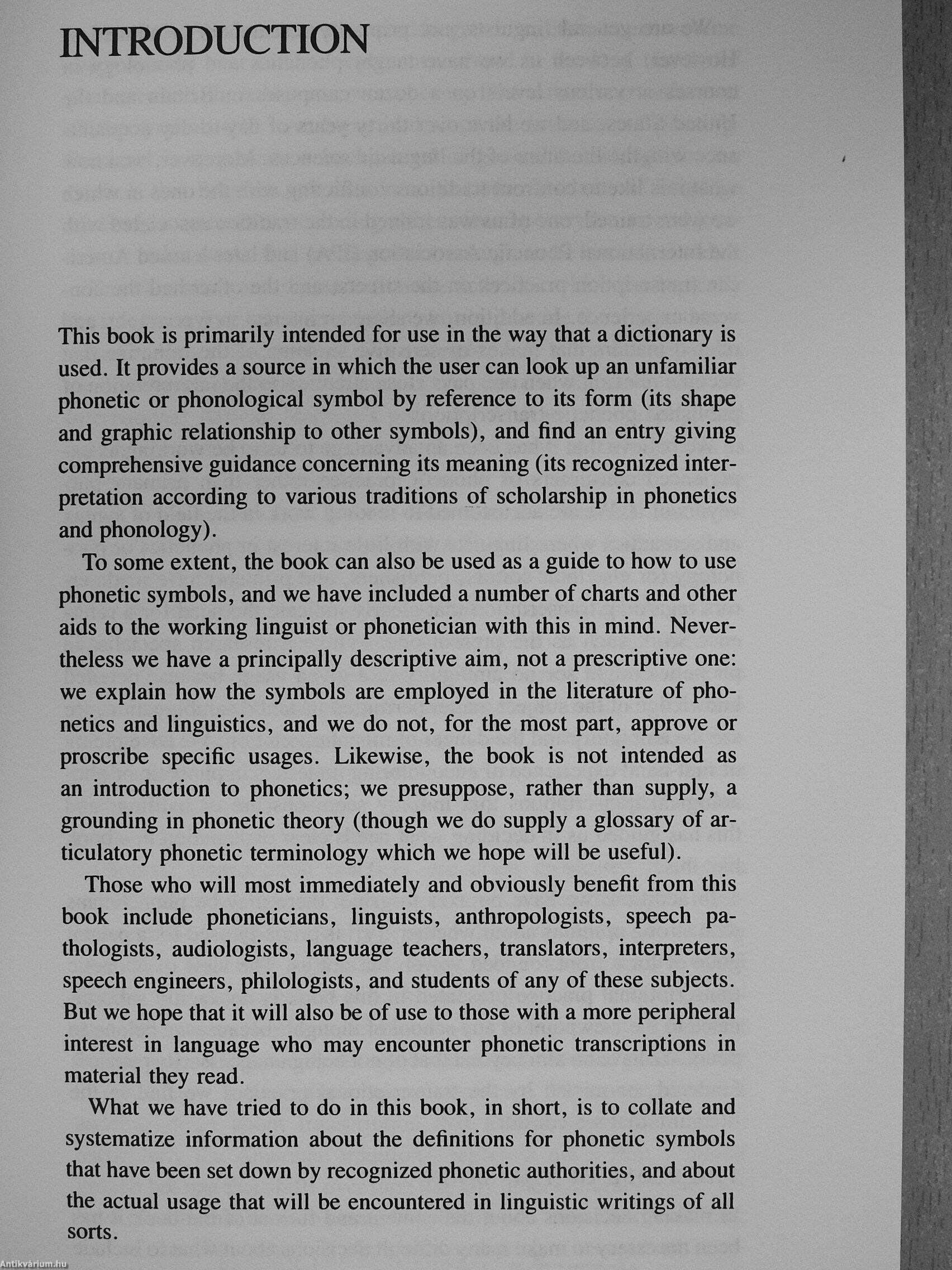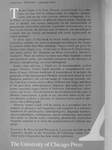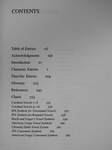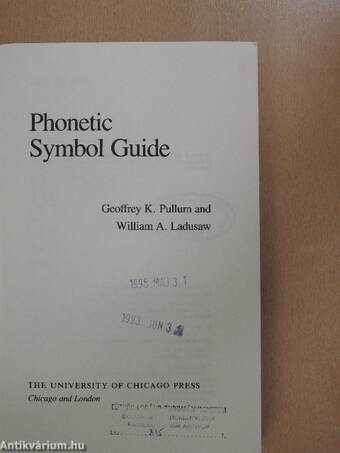1.067.017
kiadvánnyal nyújtjuk Magyarország legnagyobb antikvár könyv-kínálatát

VISSZA
A TETEJÉRE
JAVASLATOKÉszre-
vételek
Phonetic Symbol Guide
| Kiadó: | The University of Chicago Press |
|---|---|
| Kiadás helye: | Chicago-London |
| Kiadás éve: | |
| Kötés típusa: | Ragasztott papírkötés |
| Oldalszám: | 266 oldal |
| Sorozatcím: | |
| Kötetszám: | |
| Nyelv: | Angol |
| Méret: | 20 cm x 13 cm |
| ISBN: | 0-226-68532-2 |
naponta értesítjük a beérkező friss
kiadványokról
naponta értesítjük a beérkező friss
kiadványokról
Előszó
TovábbFülszöveg
Linguistics / Reference / Language study
he first book of its kind, Phonetic Symbol Guide is a reference aid that will be indispensable for linguists, phoneticians, and anyone with a serious interest in language. It is, in effect, an encyclopedia of phonetic transcription, allowing the user to identify and resolve ambiguity in the interpretation of phonetically transcribed material. It presents systematically, in an easy-to-use format, the distinct uses of phonetic and phonological symbols that are widely encountered and could legitimately be called standard.
To allow users of this book to locate easily even completely unfamiliar symbols, the guide is arranged according to the shapes of symbols rather than their meanings. Major entries are given for distinct letter shapes (e.g., lower case b, hooktop b, Greek beta), and minor entries for variations on these (crossed b, barred b, slashed b). There are entries for more than three hundred symbols and diacritical marks, and detailed... Tovább
Fülszöveg
Linguistics / Reference / Language study
he first book of its kind, Phonetic Symbol Guide is a reference aid that will be indispensable for linguists, phoneticians, and anyone with a serious interest in language. It is, in effect, an encyclopedia of phonetic transcription, allowing the user to identify and resolve ambiguity in the interpretation of phonetically transcribed material. It presents systematically, in an easy-to-use format, the distinct uses of phonetic and phonological symbols that are widely encountered and could legitimately be called standard.
To allow users of this book to locate easily even completely unfamiliar symbols, the guide is arranged according to the shapes of symbols rather than their meanings. Major entries are given for distinct letter shapes (e.g., lower case b, hooktop b, Greek beta), and minor entries for variations on these (crossed b, barred b, slashed b). There are entries for more than three hundred symbols and diacritical marks, and detailed references to the literature of phonetics and phonology are given throughout.
Rather than offering a fixed set of recommended symbol usages, Phonetic Symbol Guide provides a comprehensive synthesis of many different traditions of transcription. It includes the proposals of the International Phonetic Association (used in most European journals), the current usage of American journals, earlier American systems such as those of Bloch and Trager and those of the post-Boas anthropological linguists, and many less well-known specialist usages (those of Slavicists, Germanicists, Indol-ogists, and so on). Also included are an introduction to the topic of phonetic transcription, a guide to use, detailed charts of the various phonetic systems, a glossary of technical terms used in phonetics, and a bibliography.
Phonetic Symbol Guide will be useful as a secondary text for students of phonetics and linguistics, and essential as a reference handbook for philologists, anthropologists, language teachers, speech pathologists, audiologists, speech technicians, and anyone who needs to consult works containing phonetically transcribed linguistic material or to learn the pronunciation of a foreign language.
Geoffrey K. Pullum and William A. Ladusaw are both on the linguistics faculty at the University of California, Santa Cruz. Their work in linguistics has been widely published.
he University of Chicago Press Vissza
Témakörök
- Idegennyelv > Idegennyelvű könyvek > Angol > Nyelvészet
- Idegennyelv > Idegennyelvű könyvek > Angol > Szótárak
- Nyelvészet > Idegen nyelvek > Egyéb
- Nyelvészet > Kommunikáció > Beszéd > Egyéb
- Szótárak > Szakszótárak > Tudományos > Nyelvészeti
- Szótárak > Idegennyelvű szótárak > Angol
- Idegennyelv > Nyelvtanulás > Nyelvek > Angol > Hangtan
- Idegennyelv > Nyelvtanulás > Nyelvek > Angol > Kézikönyv
Megvásárolható példányok
Nincs megvásárolható példány
A könyv összes megrendelhető példánya elfogyott. Ha kívánja, előjegyezheti a könyvet, és amint a könyv egy újabb példánya elérhető lesz, értesítjük.



